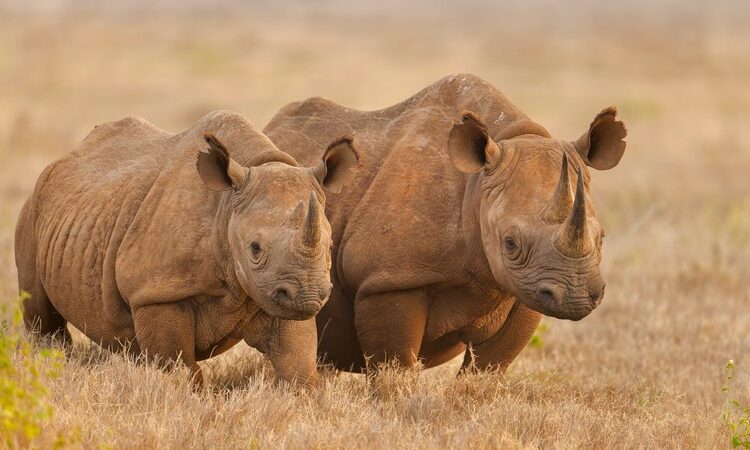
Africa is a continent that boasts a rich tapestry of biodiversity, vibrant cultures, and breathtaking landscapes. Among its most celebrated attractions is the big five safari—lion, leopard, elephant, rhinoceros, and Cape buffalo. These majestic animals not only represent the essence of Africa’s wildlife but also symbolize the spirit of adventure that draws millions of tourists to this remarkable land. In this article, we will embark on a journey through Africa’s iconic wildlife and their habitats, exploring the beauty and significance of each of these magnificent creatures.
The Significance of the Big Five
The term “Big Five” was originally coined by big-game hunters in the early 20th century to describe the five most difficult animals to hunt on foot. However, today, it has evolved into a term that highlights the importance of conservation and wildlife tourism. Each member of the Big Five plays a vital role in its ecosystem, and understanding their habitats can help us appreciate the interconnectedness of life on this planet.
The Lion: King of the Savanna
Habitat: Lions primarily inhabit grasslands, savannas, and open woodlands. They are often found in national parks and reserves, where they can roam freely.
Behavior and Social Structure: Known as the “king of the jungle,” lions are social animals that live in prides, typically consisting of several females, their cubs, and a small number of males. The females are the primary hunters, working together to bring down prey such as wildebeest, zebras, and antelope.
Conservation Status: Unfortunately, lion populations are declining due to habitat loss, human-wildlife conflict, and poaching. Conservation efforts are essential to protect these majestic creatures and their habitats.
The Leopard: The Elusive Hunter
Habitat: Leopards are highly adaptable and can thrive in a variety of environments, including savannas, grasslands, and forests. They are often found in areas with dense vegetation, where they can stalk their prey.
Behavior and Adaptability: Known for their stealth and agility, leopards are solitary hunters that rely on their camouflage to ambush unsuspecting prey. They are skilled climbers and often drag their kills up into trees to keep them safe from scavengers.
Conservation Status: Despite their adaptability, leopards face threats from habitat loss and poaching. Preserving their habitats and ensuring a healthy prey base is crucial for their survival.
The African Elephant: Gentle Giants
Habitat: Elephants inhabit a wide range of habitats, including savannas, forests, and deserts. They are highly social creatures and often migrate in search of food and water.
Social Structure: African elephants live in matriarchal herds led by the oldest female. These herds are made up of related females and their young, while males typically leave the herd when they reach maturity.
Conservation Status: Elephants are currently facing significant threats from poaching for their ivory tusks and habitat loss due to human encroachment. Conservation efforts focus on anti-poaching measures and protecting migration corridors.
The Rhinoceros: Ancient Warriors
Habitat: Rhinos prefer savannas, grasslands, and scrublands, often near water sources. There are two species of African rhinos: the black rhino and the white rhino, each with distinct habitats and behaviors.
Behavior and Ecology: Rhinos are largely solitary creatures, although they may form loose groups when feeding. They play an essential role in their ecosystems by grazing and browsing, which helps maintain the health of their habitats.
Conservation Status: Rhinos are critically endangered due to poaching and habitat loss. Efforts to conserve them include anti-poaching patrols, habitat restoration, and community engagement initiatives to promote coexistence.
The Cape Buffalo: The Resilient Survivor
Habitat: Cape buffalo are found in a variety of habitats, including savannas, grasslands, and wetlands. They are social animals that form large herds, often migrating in search of grazing land.
Social Behavior: Buffalo herds are known for their strong social bonds and protective instincts. They work together to defend against predators, showcasing their resilience and adaptability.
Conservation Status: While Cape buffalo populations are generally stable, they face threats from habitat loss and disease. Sustainable management practices and habitat protection are vital for their continued survival.
Experiencing the Big Five: Top Destinations
To witness the Big Five in their natural habitats, several destinations across Africa offer unforgettable safari experiences:
1. Serengeti National Park, Tanzania
The Serengeti is one of the most famous national parks in the world, renowned for its annual wildebeest migration and diverse wildlife. Visitors can explore the vast plains and witness lions, leopards, elephants, and buffalo in their natural habitat.
2. Kruger National Park, South Africa
Kruger National Park is a premier safari destination that boasts an incredible diversity of wildlife. Self-drive or guided safaris offer opportunities to spot all members of the Big Five, as well as numerous other species.
3. Maasai Mara National Reserve, Kenya
The Maasai Mara is famous for its exceptional wildlife viewing and cultural experiences with the Maasai people. The reserve is home to a thriving population of lions, leopards, and elephants, making it a must-visit for any wildlife enthusiast.
4. Chobe National Park, Botswana
Chobe National Park is known for its large elephant herds and stunning riverfront views. Visitors can enjoy boat safaris along the Chobe River, providing a unique perspective on wildlife encounters.
5. Etosha National Park, Namibia
Etosha National Park features vast salt pans and diverse habitats, offering excellent wildlife viewing opportunities. The park’s waterholes attract a variety of animals, making it an ideal location to see the Big Five.
Conservation and Sustainable Tourism
As we chase the Big Five, it’s essential to consider the impact of tourism on wildlife and their habitats. Sustainable tourism practices are crucial to ensure that our love for these magnificent creatures translates into meaningful conservation efforts. By supporting eco-friendly lodges, participating in responsible safari tours, and contributing to local conservation initiatives, travelers can play a vital role in preserving Africa’s wildlife for future generations.
Conclusion
Chasing the Big Five is more than just a quest for adventure; it’s an opportunity to connect with the natural world and appreciate the beauty of Africa’s iconic wildlife. By understanding their habitats and supporting conservation efforts, we can ensure that these magnificent animals continue to roam the African landscape for generations to come. Whether you’re an avid wildlife enthusiast or a casual traveler, the journey to witness the Big Five is one that will leave a lasting impression and inspire a deep appreciation for the wonders of nature




